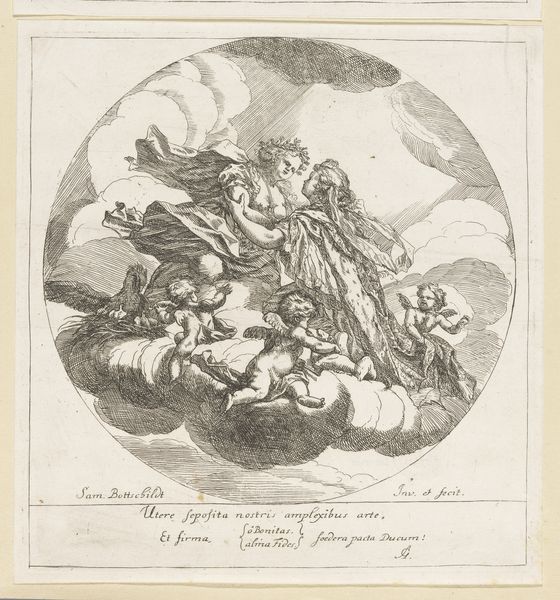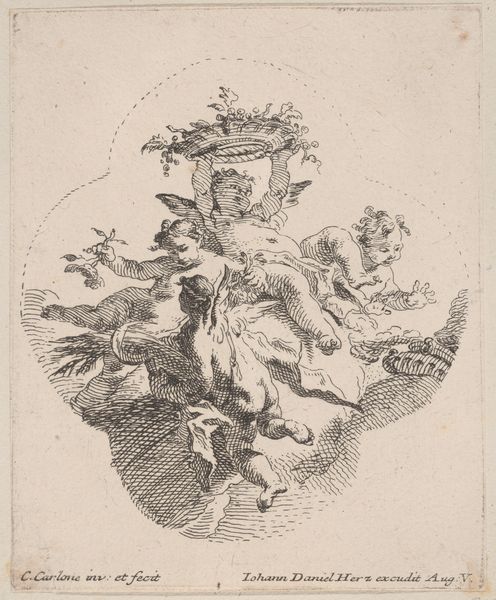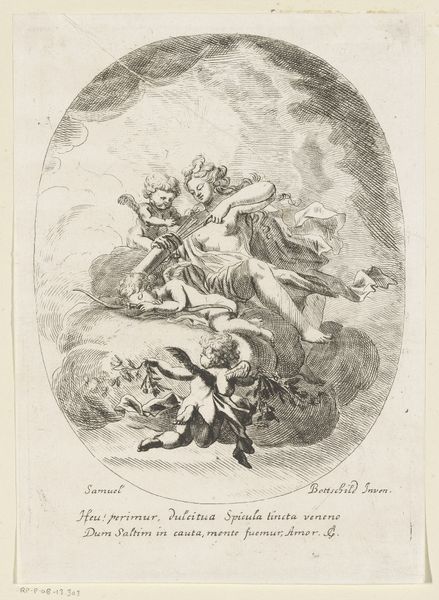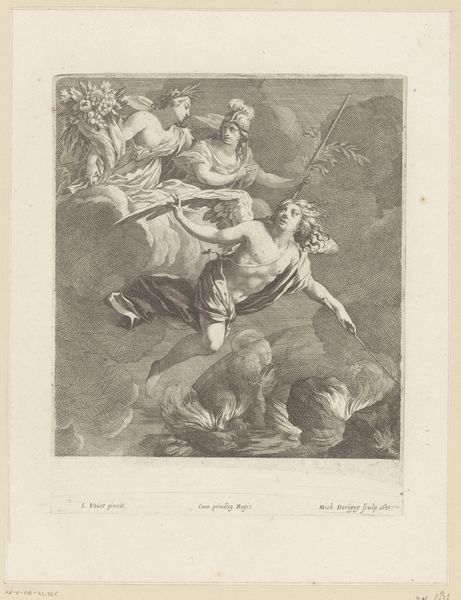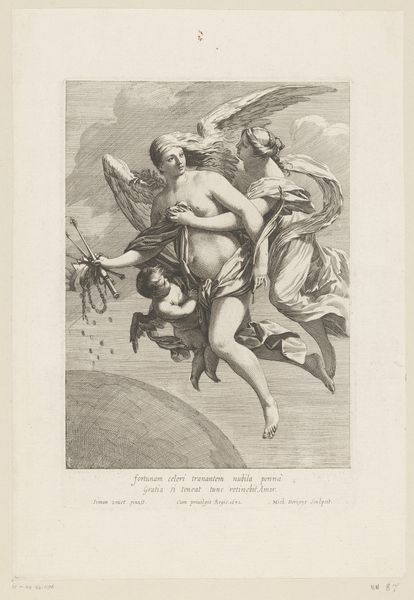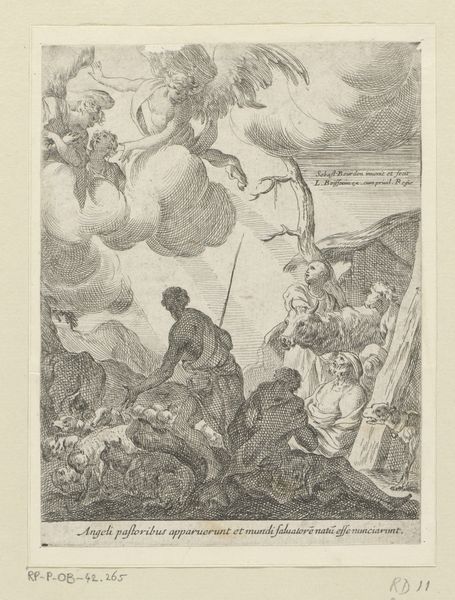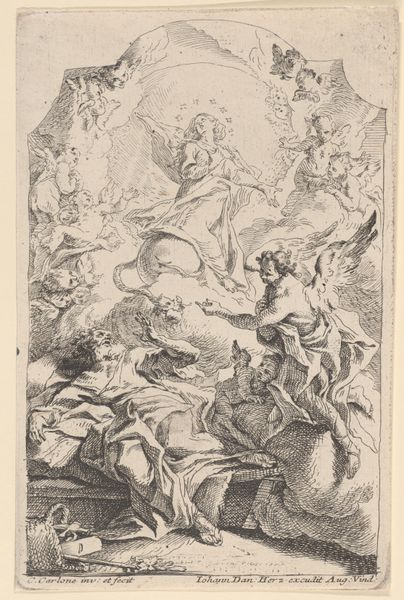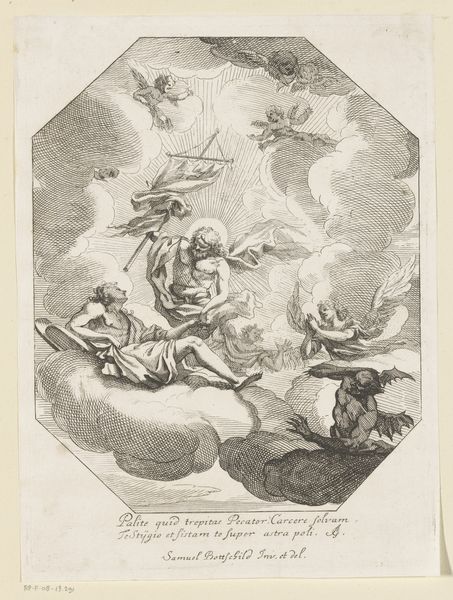
drawing, ink, engraving
#
portrait
#
drawing
#
allegory
#
baroque
#
pen sketch
#
figuration
#
ink
#
history-painting
#
engraving
Dimensions: height 245 mm, width 175 mm
Copyright: Rijks Museum: Open Domain
Editor: Here we have Samuel Bottschild's "Apollo," created in 1693, rendered in ink through engraving. It has such a dreamy feel, the figures almost seem to float within that oval frame. What immediately strikes you about its formal qualities? Curator: The dominance of line is inescapable, isn’t it? Bottschild's consistent use of hatching and cross-hatching creates a sense of volume and depth despite the two-dimensional nature of the engraving. Observe how the density of lines around Apollo's form serves to emphasize his idealized physique. Consider also how the oval format functions here. Editor: So, it contains the composition. Almost like a vignette. But does that shape limit the allegory somehow? Curator: The oval, in its classical associations, further refines the artistic strategy of using shapes and lines to reinforce each other. Notice how the cloud formation repeats in circular and elliptical forms that give a lighter counterpoint to Apollo’s weightier, angular pose. Could this deliberate contrast provide access to interpreting his attributes and symbolism? Editor: It’s all in how Bottschild uses those formal elements: line, shape, and contrast. It does help give structure to the image! I hadn't thought about how the technique itself reinforces the themes. Curator: Precisely. Through close inspection, we can uncover some fascinating details about what is represented. That will help us grasp this Baroque approach, and what it aimed to suggest to its intended audience. Editor: I think I’m beginning to appreciate that engravings aren't just copies, they’re intricate constructions, just like paintings.
Comments
No comments
Be the first to comment and join the conversation on the ultimate creative platform.
